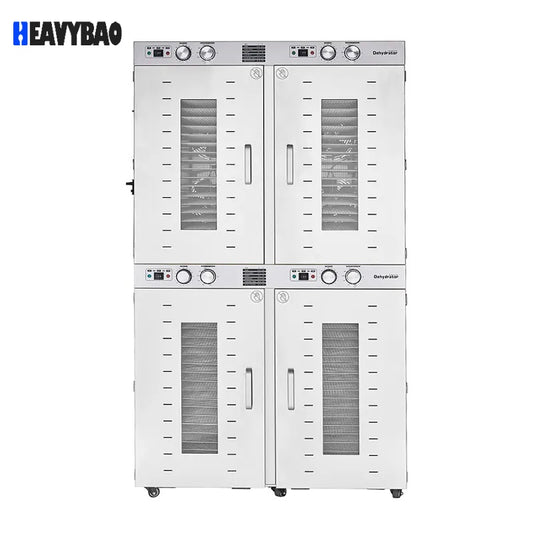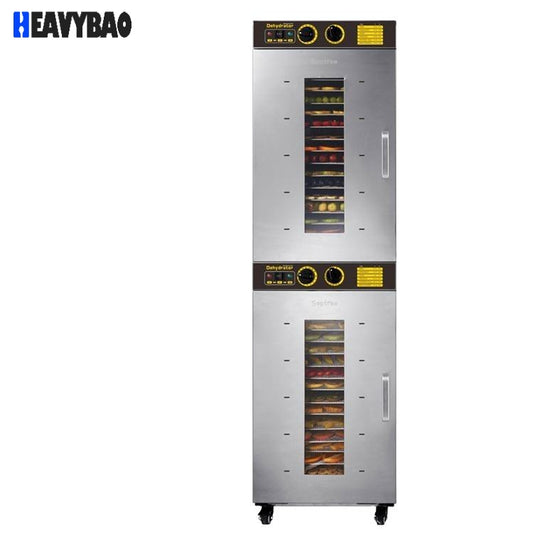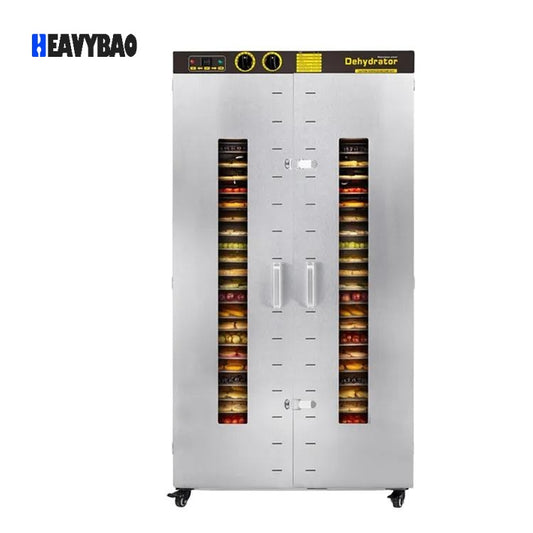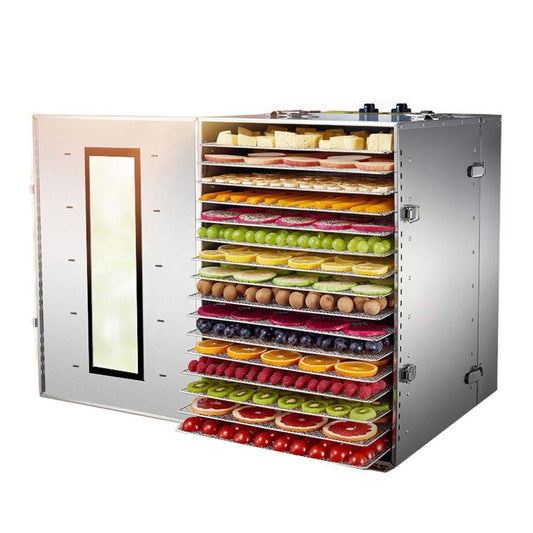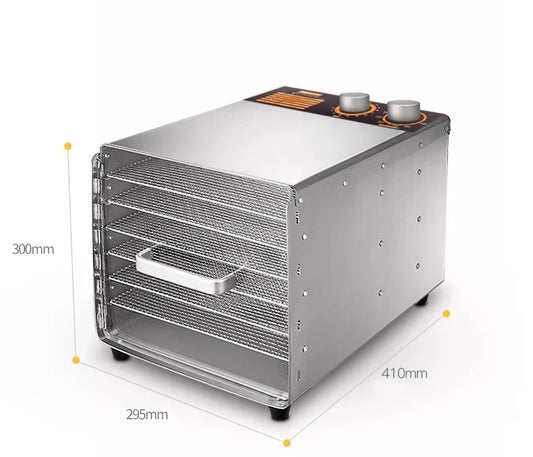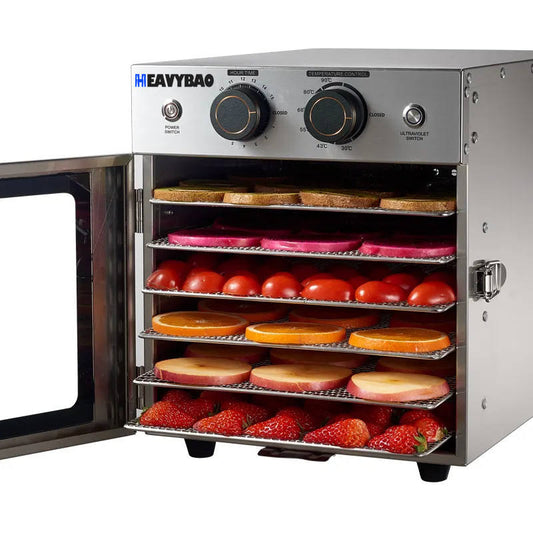Collection: Food Dehydrators
Food dehydrators remove moisture from food for preservation. Extend the shelf life of fruits, vegetables and meats by drying. Some foods, like tomatoes, achieve a slightly different taste profile when dried, others, like mushrooms, acquire a heightened aroma as the drying process concentrates natural flavours due to the lack of water content. Elevate your dishes with richer and more intense tastes and with varying textures by mixing fresh and dried edibles. Make easy nutritious desserts, your own yoghurt and granola accompaniments and high energy on the go snacks by drying fruits and making fruit leather rolls. Dried fruits make for pretty, aromatic garnishes. The high content of water in food is an optimum environment for the growth of various strains of bacteria which causes food to spoil and disintegrate helping the cycle of nature. Fruits and vegetables contain 80% to 95% water and the water content of meat is 50% to 75%; food dehydrators are low power convection ovens that use heated air flow to reduce the water content of foods, by accelerating surface evaporation and warming the food to release moisture from the interior, to a substantially lower water content of less than 20%. Most foods are dehydrated at 54°C/ 130°F, meats being made into jerky should be dehydrated at, or preheated to, a higher temperature of 68°C/ 155°F to guard against pathogens that may already be present. These temperatures are similar to those used in pasteurization to achieve similar effects. The key to successful food dehydration is the application of a constant suitable temperature and adequate air flow. Too high a temperature or insufficient air flow can cause hardened foods; hard and dry on the outside but moist and vulnerable to spoiling on the inside. Drying dramatically reduces the weight and volume food making it easier to store, for a longer time.


